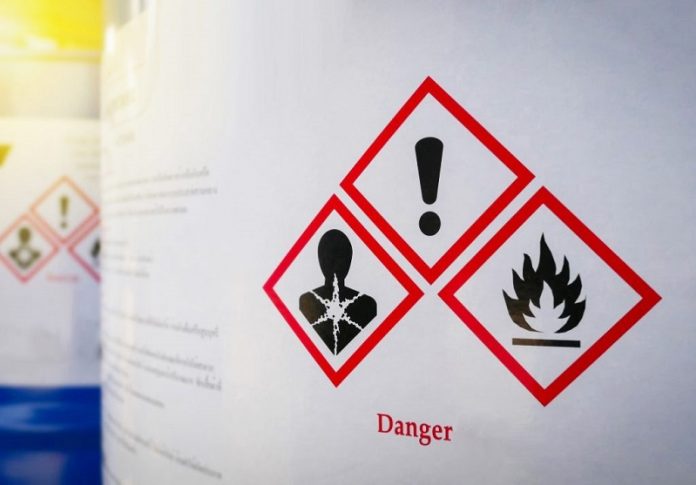CLP: EC PROPOSES MAJOR OVERHAUL OF CHEMICAL LABELLING INCLUDING MINIMUM FONT SIZES
EC UNVEILS PROPOSAL TO REVISE EU CHEMICAL LABELLING RULES
On 19th December 2022, the European Commission proposed a revised Regulation on the classification, labelling and packaging of chemicals (CLP) and introduced five new hazard classes for endocrine disruptors and other harmful substances. The addition of these new hazard classes means that relevant chemical manufacturers will need to update the labels on their packaging, Safety Data Sheets, and REACH registration dossiers.
However, it is the proposed changes to label formatting that could have far wider implications for the rest of the chemical industry. These proposed amendments, aimed at improving the communication of chemical hazards, include significant changes such as minimal font sizes and changes to the layout of labels.
NEW LABELLING PROPOSALS
In order to improve the hazard communication of chemicals the EC suggested 5 measures:
- Obligatory formatting rules for labels
- A framework of rules for selling chemicals in refillable containers
- Voluntary partial digital labelling
- A broader use of fold-out labels
- Additional derogations for chemicals sold to consumers in bulk (such as fuel) and in very small packaging (such as writing instruments)
OBLIGATORY FORMATTING RULES FOR LABELS
The new formatting rules aim to increase the visibility and legibility of important information on chemical labels. One key aspect of this proposal is the introduction of minimum font sizes for labelling text.
It is also proposed that the text on the label shall have the following characteristics:
(a) the background of the label shall be white;(b) the distance between two lines shall be equal, or above, 120 % of the font size;(c) a single font shall be used that is easily legible and without serifs;(d) the letter spacing shall be appropriate for the selected font to be comfortably legible.
The following table from the proposal indicates the minimum dimensions of the label, the pictogram, and the font size of letters:

The following label example shows the text at the proposed size for a 5L container (74x105mm). The necessary elements, with the text at 12pt, take up the full size of the label with no room left for contact details or other information. If a substance, or mixture, requires more than 2 hazard pictograms, or a larger amount of phrases, this would be impossible to configure and a larger label would be required – having a knock-on effect on the amount of material needed for the label, and also the cost and subsequent waste thereafter. This could also lead to companies aiming to minimise the number of phrases per label, resulting in the end user having less information at hand.

SELLING CHEMICALS IN REFILLABLE CONTAINERS
VOLUNTARY PARTLY DIGITISED LABELLING
In addition to keeping essential safety information on the physical labels, making more use of digitalised labels would make it possible to provide additional information online about hazards, safety, and product composition, in many various languages.
BROADER USE OF FOLD-OUT LABELS
LABELLING OF ONLINE SALES
In order to address legal gaps and high levels of non-compliance the new proposal aims to strengthen the rules for online sales.
Online marketplaces are not defined as ‘importers’ nor ‘economic operators’ and therefore EU Member State authorities cannot enforce EU chemicals safety laws for goods sold online, especially if online marketplaces are registered outside of the EU.
It is proposed that the same classification, labelling and packaging obligations should apply to online sales and that chemicals sold online, in the EU market, must be in compliance with the CLP regulations.
In addition, there will be an obligation on the advertising of hazardous substances and mixtures to contain all of the information which is most important in terms of safety and protection of the environment, and for the advertisement to contain the hazard pictogram, signal word, the hazard class, and the hazard statements.
DEADLINES FOR UPDATING INFORMATION ON LABELS
NEXT STEPS
It is worth noting that these proposals are not yet final and the EU is taking feedback from the industry and stakeholders before finalising any regulations. The implementation of these proposed measures will have an impact on the cost of production of chemicals and the industry will have to come up with solutions to balance safety and economic aspects.
Read the Delegated Act and Proposal for Revision of the Regulation on Classification, Labelling & Packaging of Chemicals.
A consultation on the proposal for revision is open until the 9th March 2023 and comments can be made HERE
Do NOT make any amendments to your labels on the basis of these proposals. It is possible that further alterations may be implemented before the actual publication of any legal text.
HOW CAN HIBISCUS HELP
Hibiscus Plc has been providing labelling solutions for the chemical and hazardous goods industries for over 40 years.
Find out how we can improve your hazard communication compliance – Call us today: 0113 242 4272










